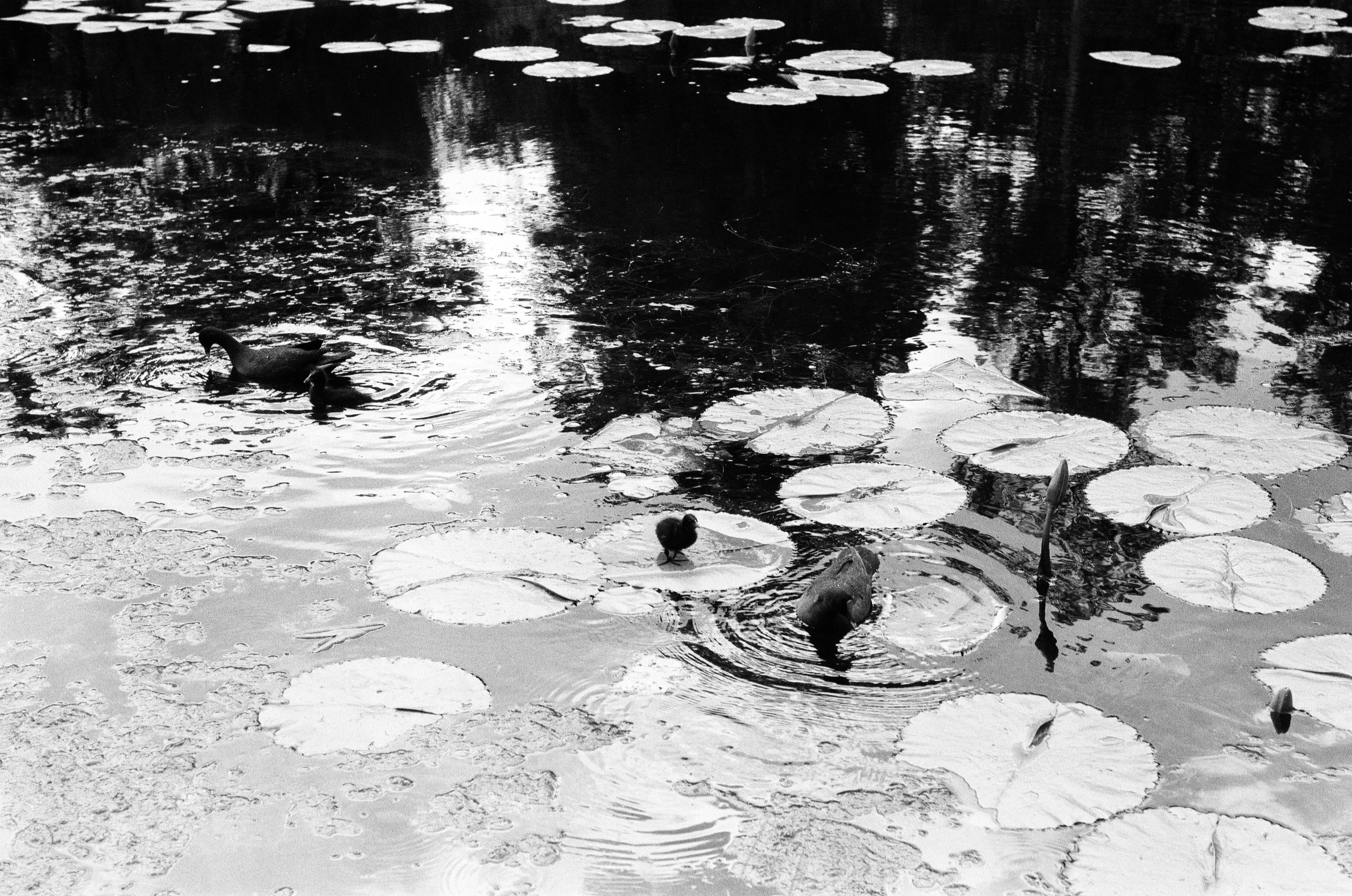Until this year, I’d shot the occasional roll of film with an Olympus OM-1n. I’d inherited this SLR from my grandfather and the camera was a delight to use. Or at least it was until it stopped working. I took it to a local camera repair place and the diagnosis was terminal owing to a lack of spare parts.
With the Olympus relegated to my shelves until I could find a suitable donor camera, I decided the replacement needed to be cheap, easy to acquire and reliable. Of course such standards are rarely met, so a compromise was reached and I was willing to sacrifice reliability for repairability. Enter the Kiev 4.

Cool plant. Shot on Kodak TMax 400
During the 1930s Leica and Zeiss dominated the 35mm camera scene, producing rangefinder cameras that are sought after even today. Soviet factories were hard at work trying to replicate their designs producing the FED, and later the Zorki, series which were derived from the Leica II. After the war, however, Soviet camera production took a leap forward.
The Zeiss Ikon factories were located in Dresden, with much of the production equipment and personnel being…liberated to the Arsenal factory in Kyiv, Ukraine. Not only did this give the Soviet manufacturers the ability to produce high-quality lenses based on Carl Zeiss designs, but it also allowed them to reproduce the Contax line of cameras utilising the original methods and equipment. These Contax copies, named for their city of origin, were mass produced meaning they can easily be had for a song.
Being both cheap and common meant that the Kiev 4 satisfied the first two of my requirements, but being a product of the Soviet Union meant there was a rather large, red elephant in the room. Being produced for quantity over quality, Soviet-era goods have a reputation for unreliability. The common advice is to look for units that were made before the late 1970s, and to buy one that has been recently serviced. Even then, there are plenty of resources detailing how to fix the Kiev’s innards should problems arise.
Combing through eBay listings, I eventually found a 1964 model for around half the cost of a replacement OM-1n. After many weeks of waiting, I was eventually greeted by a suspiciously heavy package bearing a Ukrposhta label.

Look at that subtle silver coloring … the tasteful thickness of it. Oh, my God. It even has a Cyrillic label.
If you’ve made it this far, you might be thinking to yourself “the history lesson is all very well and good, but what’s the camera actually like?”
Part of the reason I enjoy shooting film is the tactility it offers, not just in being to hold the negatives but throughout the entire process of shooting. Tactility is something that the Kiev 4 has plenty to offer. The body is a solid chunk of metal, which gives it a considerable amount of heft. It weighs twice as much as my old Olympus despite being roughly the same size
The inner workings of the camera are entirely mechanical, much like the OM-1. However, unlike the OM-1 the sensations are heightened tenfold. Cocking the shutter at slower shutter speeds takes more effort than at higher shutter speeds. Similarly, when changing shutter speeds you can feel the tension in the mechanism increasing and decreasing. Everything you do to the camera is met with some form of response. As for the shutter, pressing the release results in a delightful “thock” as the metallic slats which comprise the curtain slide over the film.

A prickly personality. Shot on Kodak TMax 400
Eager to put the camera through its paces, I loaded it up with Kodak TMax 400 and headed to the local botanic gardens.
While there were a few niggling issues, such as adapting to the new focusing method and the slightly uncomfortable way of holding the camera (Google “Contax grip”), on the whole shooting with the Kiev 4 was delightful. Firing shots off left, right and center I quickly finished the roll and took it to be developed. Receiving the scans, I was very happy. No overlapping frames, no light leaks (although somebody managed to put a fingerprint on the film while loading the camera) and the Jupiter-8M lens rendered the scenes well.
Do I like the camera enough to completely replace the Olympus? Not quite, but I’m far from regretting my purchase.






Leave a Reply